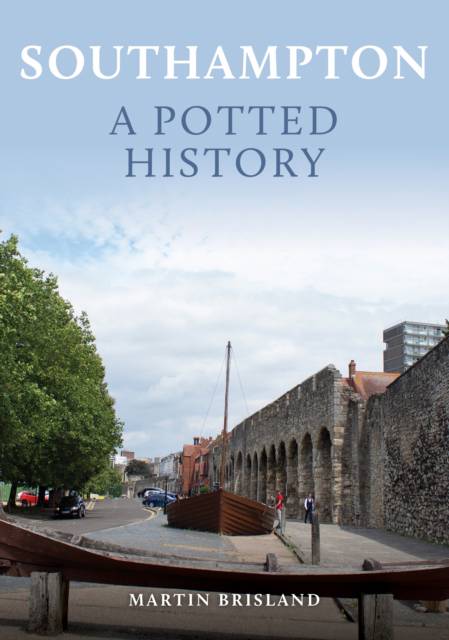
- Afhalen na 1 uur in een winkel met voorraad
- Gratis thuislevering in België vanaf € 30
- Ruim aanbod met 7 miljoen producten
- Afhalen na 1 uur in een winkel met voorraad
- Gratis thuislevering in België vanaf € 30
- Ruim aanbod met 7 miljoen producten
Zoeken
€ 22,45
+ 44 punten
Omschrijving
Southampton has been a major port on the south coast of England since the Norman Conquest, when it was a significant departure route for trade to Normandy, as well as for invading forces. Its position meant it was also potentially threatened by forces from abroad and extensive defences were built over the centuries, from its medieval walls to Tudor fortifications along the Solent. In the nineteenth century Southampton Docks were developed and the strategic importance of the city, as well as vital manufacturing sites such as the Supermarine Spitfire factory, meant that Southampton was heavily targeted by German aerial bombardment during the Second World War with heavy destruction of life and buildings. Today Southampton is a major commercial centre and has attracted new industries. Illustrated throughout, this accessible historical portrait of the transformation that Southampton has undergone through the ages will be of great interest to residents, visitors and all those with links to the city.
Specificaties
Betrokkenen
- Auteur(s):
- Uitgeverij:
Inhoud
- Aantal bladzijden:
- 96
- Taal:
- Engels
- Reeks:
Eigenschappen
- Productcode (EAN):
- 9781398108189
- Verschijningsdatum:
- 15/11/2023
- Uitvoering:
- Paperback
- Formaat:
- Trade paperback (VS)
- Afmetingen:
- 165 mm x 234 mm
- Gewicht:
- 269 g

Alleen bij Standaard Boekhandel
+ 44 punten op je klantenkaart van Standaard Boekhandel
Beoordelingen
We publiceren alleen reviews die voldoen aan de voorwaarden voor reviews. Bekijk onze voorwaarden voor reviews.











